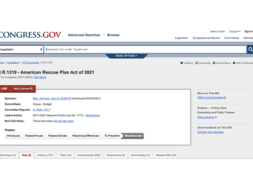
Maximizing Lease Protections in Case of a Future School Closure
By Julie S. Mebane, Partner in Duane Morris LLP’s Real Estate Practice Group
As the news media and sector reports confirm, numerous schools and career colleges are faced with the imminent or likely future need to close one or more locations.
The difficult school regulatory environment, combined with challenging economic circumstances and cyclical real estate markets, have had consequences that may not have been foreseen and can result in the need for an early and untimely school closure.
One way to help avoid economic crisis following such a school closure is to consider this possibility at the time the school is negotiating its lease. At that stage, it is still possible to include certain lease provisions and protections that may be helpful to the school in the event of a closure. The following are some key points to consider and seek to address in a school lease document.
Early termination right or buy-out provision.
Consider negotiating the right to terminate the lease prior to the expiration of the full term. Sometimes a lease will allow the tenant a one-time right to “pull the plug” on the lease and end the term early on a set date, usually upon a certain number of months’ advance notice to the landlord and the tenant’s payment of a negotiated termination payment. In other leases, the right to terminate is ongoing and not tied to a specific date, but prior written notice and a termination fee to the landlord are usually required. The termination fee in these situations is usually hefty and is specifically calculated to compensate the landlord for much of its lost rental revenue stream, as well as for certain up-front leasing expenses such as tenant improvement allowances, free rent concessions and brokerage commissions.
Shorter initial lease term with options to renew.
If the likelihood of success at a particular school location is unknown or in doubt when the lease is being negotiated, it may be advisable to structure a shorter initial lease term followed by one or two extension rights that are exercisable at the tenant’s option. For instance, instead of agreeing to a ten-year lease term, the educational tenant might try to structure a deal that provides for a five-year initial term with two five-year renewal rights.
Expand assignment and subleasing rights.
One of the most promising ways of making an early exit from a lease is to assign or sublease the premises to another user. Unfortunately, most landlord-drafted lease documents place numerous restrictions on these rights, so it is worthwhile to pay attention to them and negotiate certain modifications when the lease is being documented.
The lease should state that the landlord will not unreasonably withhold or delay its consent to a proposed assignment or sublease.
Also, the lease may provide that certain assignees or subtenants are preapproved by the landlord; these may include specifically identified qualified users, affiliated organizations of the tenant, or companies or individuals with a substantial net worth (exceeding an agreed-upon monetary threshold). A qualified leasing attorney will likely have other suggestions for language changes that will benefit the educational tenant if it needs to sublease or assign space during the term. A good real estate broker with an awareness of the local market can also assist the tenant in identifying and vetting potential assignees or subtenants.
Allow for future abandonment of the premises without a resulting tenant default.
Leases frequently provide that the tenant’s cessation of operations on the premises or moving out from the space is an automatic event of default. Such a default may result in the tenant’s liability not only for ongoing monthly rent payments, but also for interest payments, late fees, and costs of litigation. In many situations, the tenant would have been better off if it had the simple option to close a location or “go dark” without this being treated as an actual default. Removing abandonment from the list of tenant defaults will not spare the tenant from the requirement of paying monthly rent installments after it stops operating, but it will avoid the expense of litigation and related penalties. This lease change is usually difficult to negotiate in retail settings (because retail landlords abhor having empty or “dark” spaces), but the landlord of an office or industrial building may be more amenable to this request.
Add a landlord default provision.
Most landlord’s lease forms are completely silent on the subject of landlord defaults and tenant remedies, although they usually contain detailed tenant default clauses. If the tenant is able to convince a landlord to insert a clause that describes the events that constitute a landlord default and the resulting tenant remedies, this may help the tenant when it wishes to get out of a lease before the term has expired. Sometimes an ongoing landlord default can be the reason why a tenant needs to move out early, or at least it may be a good justification for terminating a lease and making an early exit.
Include a zoning/land use termination right.
On some unfortunate occasions, schools are required to close because there has been a change in the zoning or land use entitlements of the underlying property that preclude its ongoing operations. These circumstances may be entirely beyond the tenant’s control, but the consequences can be disastrous to a school tenant. It is worthwhile to anticipate this possibility and seek to include in the lease a provision allowing the tenant to terminate the lease in the event that its operations must cease due to a change in zoning and land use rights governing the property.
Negotiate tenant’s restoration and surrender obligations.
It will make the tenant’s move-out, particularly an early departure, a smoother and less contentious process if the lease terms relating to surrender and restoration of the premises are carefully reviewed and negotiated when the lease is prepared. Be careful of language that requires the tenant to restore the premises to its “as is” or “original condition” – if tenant improvements were installed by the tenant when it took occupancy, does that mean the tenant must remove all of the TIs and surrender shell space to the landlord? It’s important to be specific about what restoration work is expected of the departing tenant to avoid unpleasant surprises or last-minute disputes at move-out time.
Avoid signing a personal guaranty of lease, if possible.
Many landlords insist on a separate guaranty of lease being signed to back up a lease, especially when the tenant’s financial statement is not deemed adequate. The individual or entity signing such a guaranty is often taking on a huge potential liability, though.
Upon the tenant’s alleged default, the landlord may elect to proceed directly with a lawsuit against the guarantor instead of against the tenant (which it will usually do if it suspects that it will be easier or more lucrative to recover damages from the guarantor than from the tenant).
If there is a good reason for protecting the guarantor, attempt to negotiate terms that will avoid the requirement for such a lease guaranty. For instance, consider offering a larger security deposit instead, either in cash or in the form of a letter of credit. If a guaranty cannot be completely avoided, it is sometimes possible to limit the guaranteed liability to a specific dollar amount, or to negotiate with the landlord for a more limited form of “good guy” guaranty.
The tips enumerated above are important to consider when negotiating a lease document for an educational use. Too frequently, though, these points are not addressed or could not be included in the lease document. All hope is not necessarily lost if the school lease has already been finalized and signed when an early closure scenario is looming. This is going to be a more challenging situation, though, because potential damages and hefty default penalties and fees need to be considered and hopefully avoided by careful planning.
A school tenant that is facing this situation should meet with a qualified commercial real estate attorney to discuss possible ways to minimize the damages recoverable by the landlord following an early departure by the tenant. The attorney will need to review copies of the lease document and any amendments, as well as any other important documents and correspondence relating to the lease, the premises and any past defaults alleged by either party. If an ongoing record of facilities problems and uncured landlord defaults exists (such as leaking roofs, non-functioning air conditioning, or other matters that resulted in program disruption and possibly a “constructive eviction”), the attorney may be able to use this information to the school’s advantage in negotiating the school’s early departure.
The school’s attorney will pay close attention to the lease’s assignment and subleasing provisions to see what rights the school may have to downsize by bringing in a third party to utilize some or all of its space. The attorney may also consider the possibility of negotiating a lease amendment with the landlord to decrease the school’s space and rental obligations (i.e., by a partial lease termination).
It is often possible to negotiate an early termination agreement with a landlord even if the lease does not expressly contain a termination right. In this situation, though, the landlord will usually demand a substantial monetary penalty from the tenant to compensate it for leasing expenses and lost rental income.
As mentioned above, early termination of a lease is likely to be expensive, but it may still be a better option than a lawsuit over the tenant’s defaults and the landlord’s remedies.
In summary, the best advice for avoiding a financial crisis accompanying a school closure is to plan ahead. Even if your lease is already cast in stone, signed and delivered, you can still take some proactive measures. Dig out that lease file (or create one now, if you haven’t already) and review the lease and its amendments and other related documents. If you’re not sure that you have the provisions that you may need in the future, seek out professional assistance to come up with the best game plan possible to head off lease-related problems following a closure.
Julie S. Mebane is a Partner (San Diego) in the Real Estate Practice Group at Duane Morris LLP. She has a special interest in education law, particularly as it relates to real estate and facilities for schools, universities and other educational institutions. Ms. Mebane has served as the General Counsel to the UCLA Alumni Association, has served on the Board of Trustees of a K-12 independent school in San Diego, and has served as legal counsel to numerous schools, colleges and universities in connection with real estate and facilities matters and other matters.
Contact Information: Julie S. Mebane // Partner // Duane Morris LLP’s Real Estate Practice Group // 619-744-2211 // jsmebane@duanemorris.com











